Foam ceiling tiles: general information and varieties
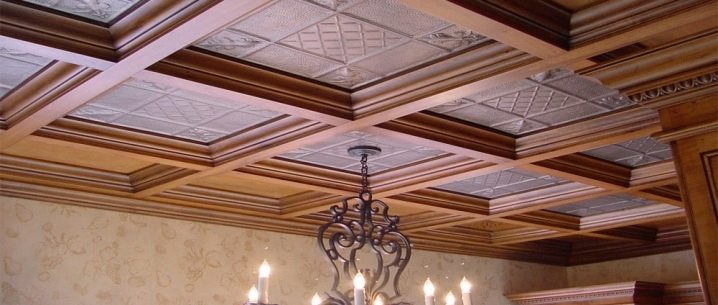
If there is a desire to make repairs in the apartment, but there is no big money for materials, then you should pay attention to the foam ceiling tiles. A wide selection of textures and colors allows you to find the best option for every taste. Ease of installation will allow you to glue the tiles yourself.

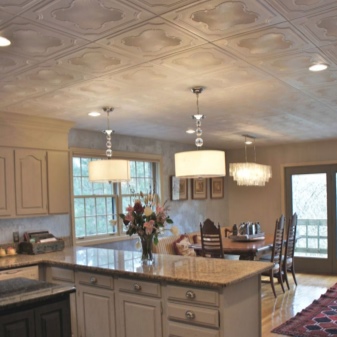
Peculiarities
Everyone from childhood is familiar with foam, the full name of which is extruded polystyrene foam or styrofoam. It is in great demand in the construction industry. Today, a variety of building materials are made from polystyrene due to its unique structure. It consists of a huge number of small air cells.
Polyfoam is characterized by lightness of design, ease of processing, and also is distinguished by the ability to create any shape of the product. Another important feature of this building material is that it retains heat perfectly. The versatility of foam is manifested in the fact that it is used in the creation of many building materials.

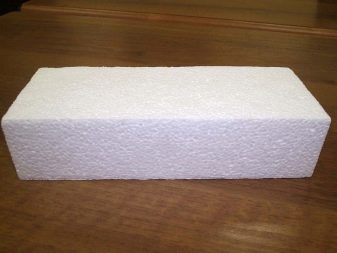
Basically, the foam tiles for the ceiling are square in shape. Standard sizes are 250x250, 300x300 and 500x500 mm. On sale you can find rectangular options, which are commonly called panels. This option is used for finishing ceilings in public areas that are not intended for living. The standard size is 1000x165 mm.
Modern manufacturers of foam ceiling tiles offer this material in other forms, sometimes you can even find options with an irregular shape. This variety allows you to create amazing compositions on different topics.
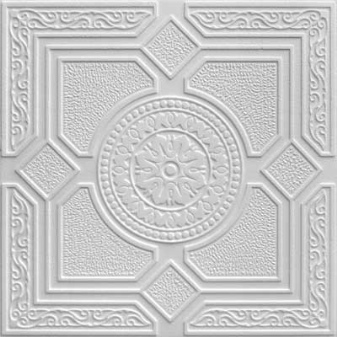
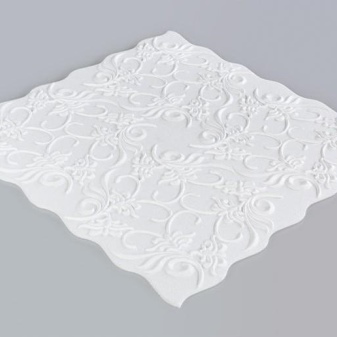
Styrofoam is presented in white and is complemented by an ornament on the front side. Such tiles are usually used for finishing the ceiling for painting with a water-based composition. To ensure excellent paint absorbency, this material has a matte finish. This option costs very little, so it is very often used for subsequent painting.
The foam board is up to 14mm thick, but standard sizes range from 2.5mm to 8mm. The lightness of the material is one of its main advantages.
So, to cover a ceiling of 20 m², you will need about 4 kg of foam tiles.
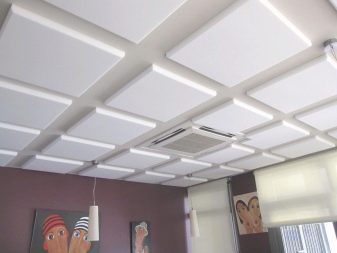
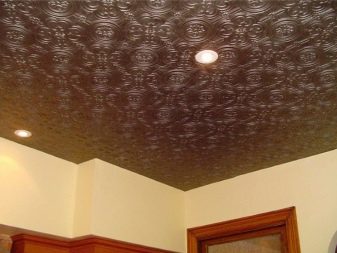
When calculating the required number of tiles measuring 500x500 mm, the ceiling area should be rounded to a larger figure, which is divisible by five. Since in the last row the tiles will have to be cut. If diagonal laying is used, then another 15% should be added to the total number of tiles.
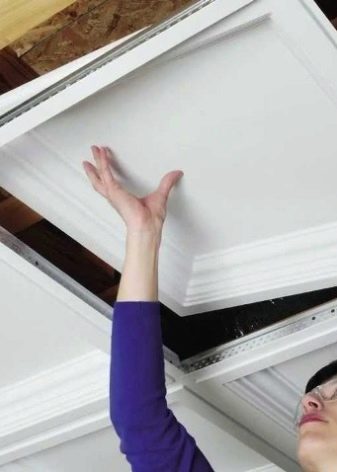

Advantages and disadvantages
Extruded polystyrene foam, like other materials, has advantages and disadvantages.
The main advantage of foam ceiling tiles is that they can be easily glued to any surface. The low weight of the material, as well as the convenience of cutting, contribute to a quick and easy installation.
This material is characterized by excellent heat and sound insulation properties. It can even be used to equip children's rooms, since it is safe, because it does not contain harmful substances in its composition.

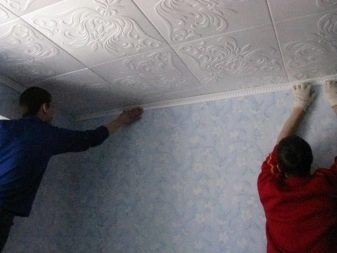
Many people prefer this finishing material, because it is inexpensive, and the glue for installation has an affordable cost.If you choose the right finishing material for the ceiling, then it will last for many years. With large tiles, the ceiling can be tiled very quickly. Since the foam tile has a small thickness, the height of the ceiling after its installation practically does not change.
Styrofoam tiles are paintable. White material can take on any shade. The tile can be painted up to seven times.
Ease of installation allows you to do everything yourself without special skills and abilities.
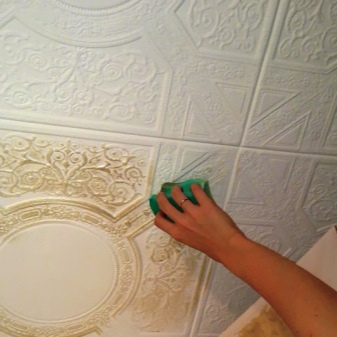
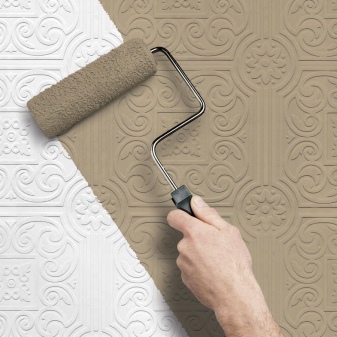
But besides the advantages, the foam tile also has some disadvantages, which you should familiarize yourself with before deciding to work with this material.
The main disadvantages of polystyrene is its fragility, so you need to be very careful with it. A significant disadvantage is vapor permeability. The ceiling can no longer absorb excess moisture. The seams between the tiles are difficult to mask. You shouldn't buy very cheap foam as it tends to yellow quickly.
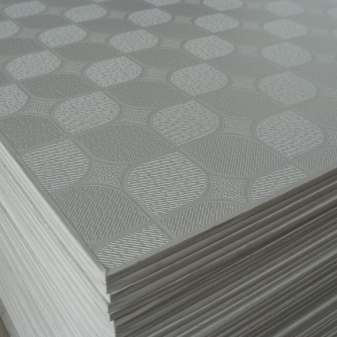
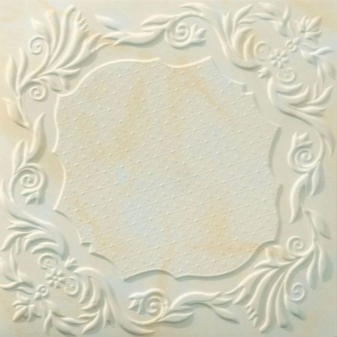
Views
Modern manufacturers offer three types of foam board, which differ in properties and manufacturing method.
Stamped
It is made from polystyrene blocks using the stamping method. Its main characteristics are light weight, low density, as well as the presence of a relief print. Its thickness varies from 6 to 8 mm.
This tile is the cheapest, so its properties are significantly lower than that of other types of foam tiles. It does not have a protective coating, is afraid of exposure to water and is fragile. It is forbidden to wash such a ceiling, therefore, you can use only the dry version for cleaning, or wipe the surface using a damp sponge.
This type of tile cannot boast of a clear shape, therefore, gaps of different sizes may appear during installation.
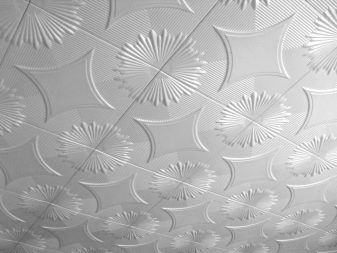

Extruded
It is made from polystyrene mass due to the application of the pressing method. It has a high density. Its thickness is generally only 3 mm. It has a protective coating, so it can even be washed with water. Since the extruded tile has a smooth surface, it can imitate wood, marble, or other materials.
The main advantages are long service life, beautiful appearance and excellent durability. If we talk about the shortcomings, it is worth highlighting that the tile does not lend itself to staining, has an uneven surface from the inside out, and also noticeable connecting seams are formed during installation.
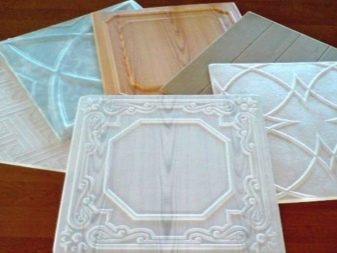
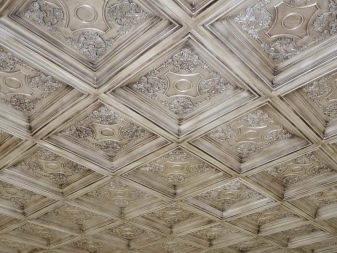
Injection
It is of the highest quality. It is produced using the method of baking polystyrene in molds. Its thickness is 14 mm. The peculiarity of this type is the increased strength and clarity of the geometry of the embossed print. The joints of the tiles during installation are of high quality, which guarantees the creation of a coherent surface.
The injection hotplate is fireproof as it does not burn. It can be washed with various detergents. If desired, it can be painted.
This option is suitable even for finishing a bathroom.
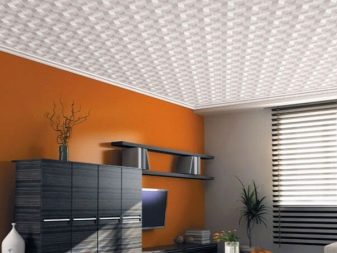
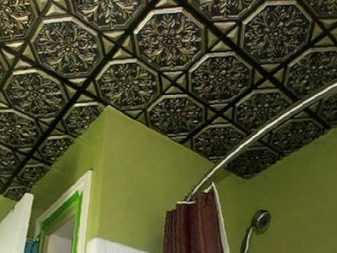
How to choose?
To make the ceiling look beautiful and even, you need to adhere to the advice of experts when choosing it:
- The tile must have straight edges, then its installation will not take much time, and there will be no large gaps between the tiles. If it has curved or deformed edges, then it should not be purchased at all.
- It is necessary to check the strength of the material. It is enough to apply a little pressure on the edge of the tile. If it crumbles, then material of this low quality should not be purchased.
- It is necessary to pay attention to the uniformity of the structure and density of the foam. There should be no waves or dents on it.
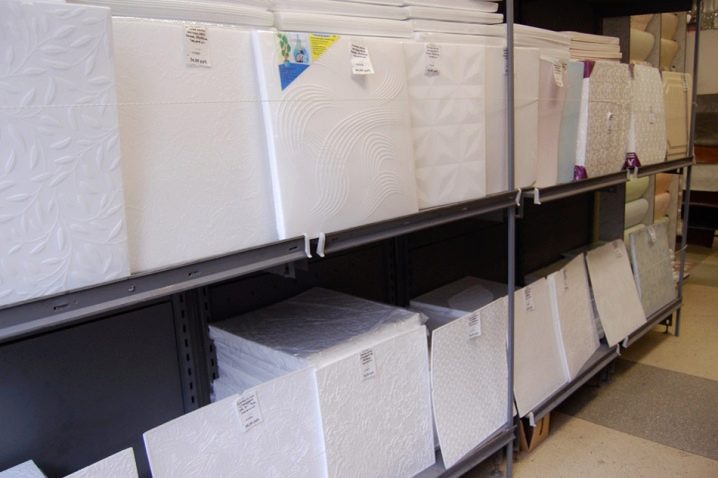
- An important criterion is the quality of the print. The drawing must be clear and legible.
- Tiles should be checked for quality before purchasing. It is necessary to lift it by one edge and shake it slightly. If the edge is not broken off or deformed, then it can be used for finishing the ceiling.
- If you want to create a single canvas without joints, then you should use the seamless option. It has a straight edge with no piping. But here you need to competently approach the gluing process, each tile must be precisely fitted to the adjacent one.

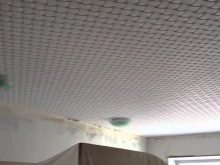
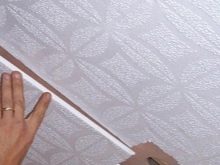
- Don't buy foam tiles online, because the material in the picture and in reality is not always the same. It is better to look at the samples in order to understand how the material looks like, what it feels like.
- Many buyers leave positive reviews about the foam tile. Therefore, remember that even among inexpensive materials, you can find a decent option for repairing.
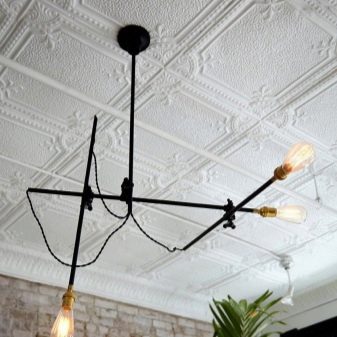

Surface preparation
First you need to pay attention to the condition of the ceiling surface, on which the foam tiles will be glued in the future.
It is necessary to carry out preparatory work:
- If there are level differences of more than one centimeter on the ceiling, then it is worth starting by leveling the ceiling.
- If wallpaper was glued on the surface, it is necessary to dismantle them, and also carefully treat the ceiling with a primer.
- To remove the whitewash from the surface, it must first be washed off and then primed.

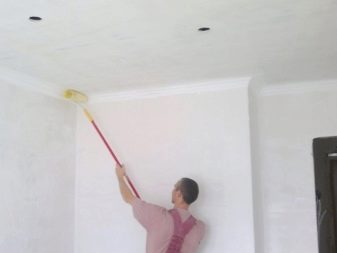
- If the ceiling was painted with oil paint, then it must be thoroughly washed with soapy water, then all the swollen paint must be removed.
- The ceiling painted with water-based paint must be moistened abundantly, then dried using a heater or a draft, and after 30 minutes the paint can be removed from the surface with a spatula.
For gluing tiles to the ceiling, you can use one of the methods: parallel, diagonal, with an offset (reminiscent of brickwork) and combined (carried out through the use of tiles of different colors).
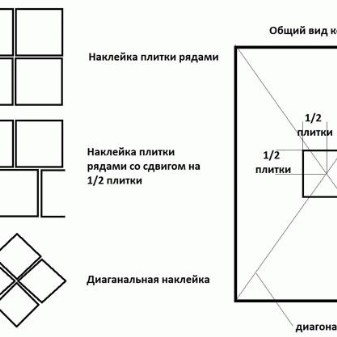
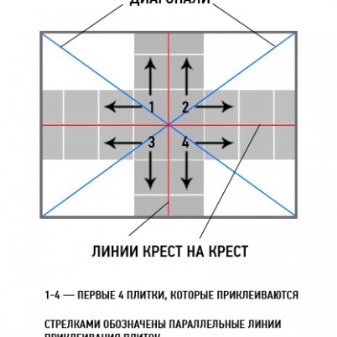
In order for the elements to be arranged evenly and in a certain order, first you need to make markings on the ceiling:
- You need to stretch two perpendicular lines using a paint cord. It needs to be pulled like a string. Each line will divide the surface into two equal parts. The geometric center will be located at the point where they intersect.
- To make the styling in a parallel way, it is enough to create a marking of two lines. To be sure, you can also draw parallel lines at a distance equal to the width of the tile.
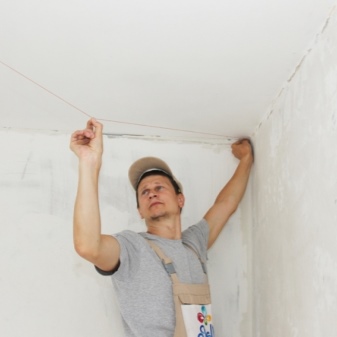
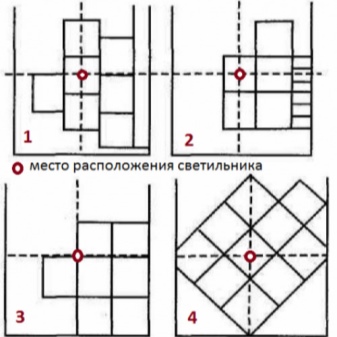
- To use the diagonal method, additional markings should be made. From the geometric center, you need to draw lines to the perpendicular lines of the first marking, while maintaining an angle of 45 degrees.
- The first tile should be glued in the center of the ceiling. There are times when work can be started from the most visible corner of the room.
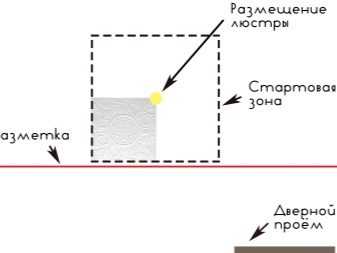
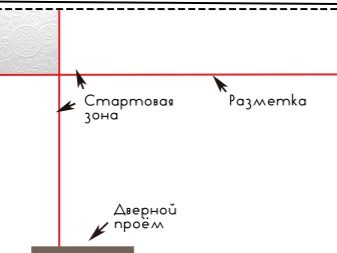
Gluing technology
The process of gluing foam tiles to the ceiling is quite easy and simple:
- Glue must be applied to the tiles, namely, in the center and along the edges. If desired, glue can be applied to the entire surface.
- Press the tile firmly against the ceiling surface and wait about 30 seconds.
- You need to gently remove your hands. If the tile sticks to the ceiling, then you can move on to the next one.
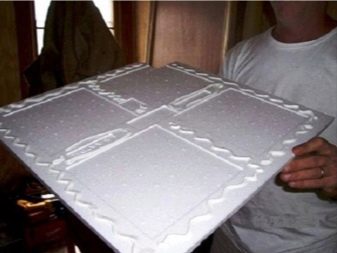

- The last row of tiles is often smaller than their standard height, so you need to cut them off with a sharp knife to get them to the correct size.
- When the entire ceiling is glued, it is worth moving on to working with cracks. To eliminate them, you can use an acrylic sealant or putty. If the tiles are glued onto a putty, then the joints can be sealed immediately during the gluing process.
- After completing all the work, it is necessary to let the tiles dry completely, so the ceiling should not be touched throughout the day.After drying, if desired, you can start painting the tiles.
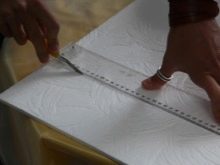
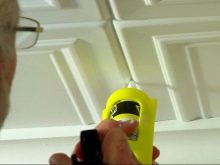

How can you wash?
Ceiling tiles can be cleaned of dust with a vacuum cleaner or a soft fluffy brush. But sometimes you should just wash it.
To clean the foam tiles, you can use those detergents that are at hand, but it is better to give preference to liquid products. It can be liquid detergent or dishwashing detergent.
The powder usually contains abrasive particles that will not damage the tile surface, but can leave streaks after washing.
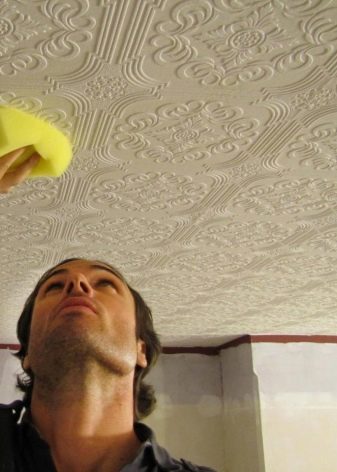
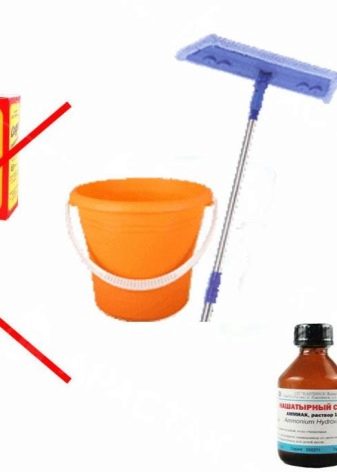
You should be very careful with stamped tiles, because they have a low density, so they can only be washed as a last resort. Injection and extruded tiles are not afraid of contact with water, as well as mechanical stress during washing.
Styrofoam tiles are cleaned in the same way as a stretch ceiling. You need to take a soft cloth or sponge, pre-moisten it in a soapy solution, which consists of detergent and water. The solution must be distributed between the embossed depressions. You can use a damp sponge or flannel to wash off the lather.
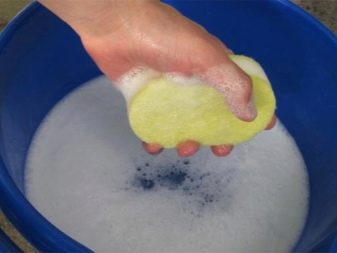
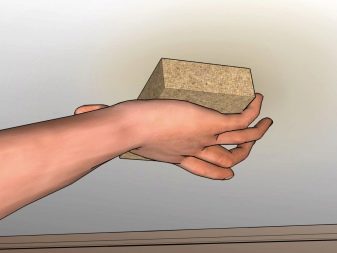
If you cannot remove moisture from the recesses of the relief with a sponge or cloth, then you can use toilet paper or paper towels.
If the moisture is not removed, then after drying, a dirty mark will appear on the tiles.
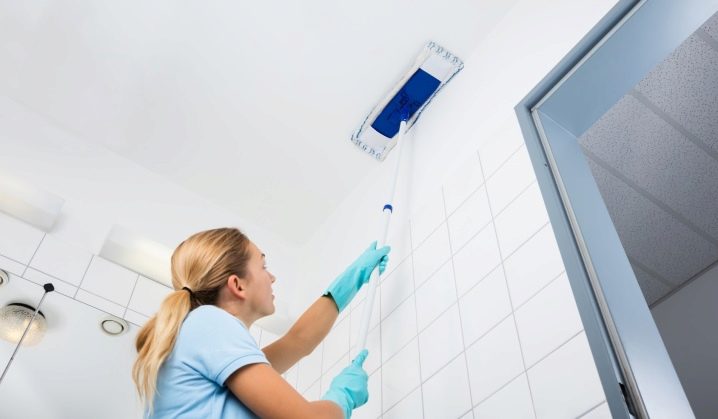
How to paint?
To freshen up your styrofoam tiles, you shouldn't whitewash them. Styrofoam ceiling can be painted, but only some types. For example, the laminated surface is not paintable.
If foam tiles can be painted, then you should give preference to water-based or acrylic paint.
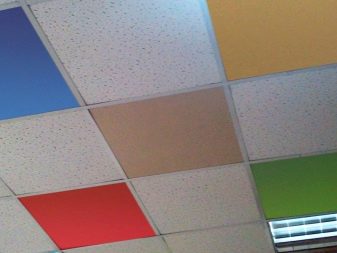
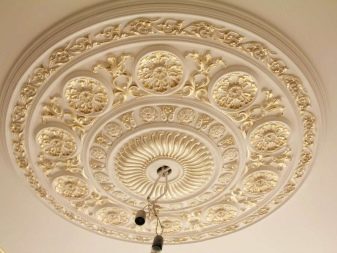
To make the foam tile look attractive and stylish after painting, you should adhere to several recommendations of experts:
- The quality of the tile coating is of great importance when choosing a paint.
- It is worth paying attention to the consumption of paint, the degree of dullness and composition, sometimes protective elements or special additives with antiseptic properties are included in it.
- Painting the ceiling should always start from the window.
- Movements should be smooth, as this will directly affect the quality of the paint.


Examples in the interior
Foam ceiling tiles are used to finish the entire surface. Decorative tiles are in great demand: they attract attention with an original pattern, which allows you to create an unusual print on the entire ceiling area.
The seamless ceiling tiles look unbeatable. One gets the impression of the integrity of the canvas. At first glance, it is even impossible to imagine that ordinary foam tiles were used to create such a surprisingly stylish ceiling. Small inserts in blue on the ceiling tiles are in perfect harmony with the color palette of the wallpaper.

Textured foam tiles allow you to create different patterns on the ceiling. It adds volume and luxury to the coating. White is a universal color, therefore it can be used both for decorating a kitchen and will look beautiful in various public places.
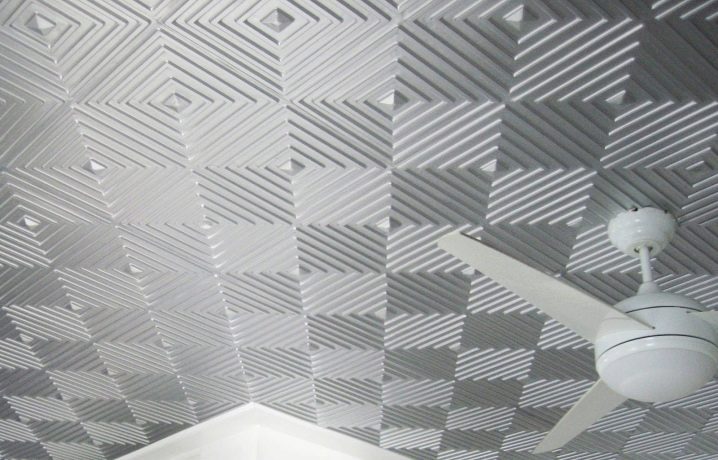
How to glue foam ceiling tiles, see the next video.













The comment was sent successfully.